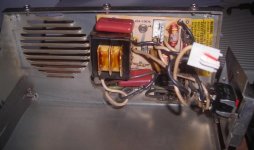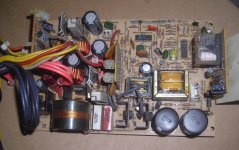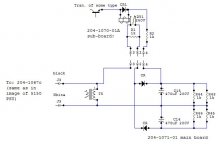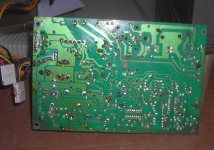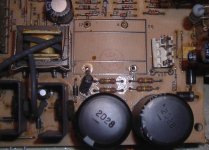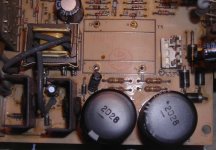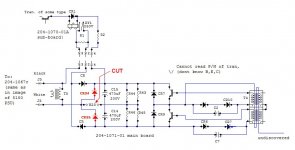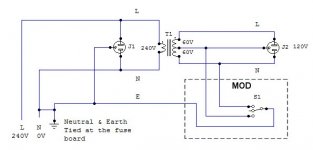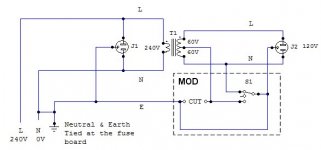Ok well here is the updated schematic:
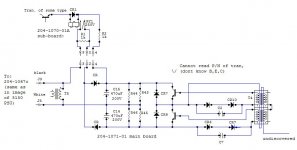
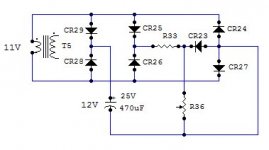
The voltage on my secondary seems to be 12VDC across the cap. The 11VAC across the transformer, is likely the result of my multimeter (1-2V accuracy). The third leg of pot R36 goes off to one of the chips. I tried to continue with the circuit diagram further but it gets real confusing.
So I guess I need to find a transformer that ~20:1. I suppose a 12VDC wall-wart should suffice.
Here is what I'm proposing to do:
As I understand it, R33, CR23 and R36 are there to provide a voltage drop to the third terminal of R36. For the moment I will take out the transformer, and in its place on the secondary side, connect 12V
DC, from a wall wart. It's rectified, again giving 1.4V loss. But I would rather not desolder/solder, more than I have to. Correct me if I'm wrong but 1.4V loss isn't going to screw up the PSU is it? Alternatively connect 12VDC across the Cap and 12V between CR23 and CR26.
Then power the device, on 120V, and the 12VDC wall-wart. It this works, Perform the mod to full wave rectification, test, on 240V, then crack open the wall wart and try to somehow fit it in the PSU.
One thing I need to do first is mod my step down transformer. It's a tool transformer. For those of you who don't know about these uniquely British devices, they are wired to provide two 60V hot leads. The ground point is actually between the 120V. Fine for tools, but if powering a 120V computer and then you connect that computer to something else, that's also grounded, as I understand it you end up with a 60V difference in ground points! Somehow this hasn't been a problem when connecting a 240V monitor to a 120V PC, and I cant understand why? So I'm going to mod it to provide, float, 60V-60V and GND-120V.
Dwight, just to clarify, do you mean to use the auto-transformer arrangement ONLY if I cant find a transformer of the correct ratio?
Thanks for your help so far.


